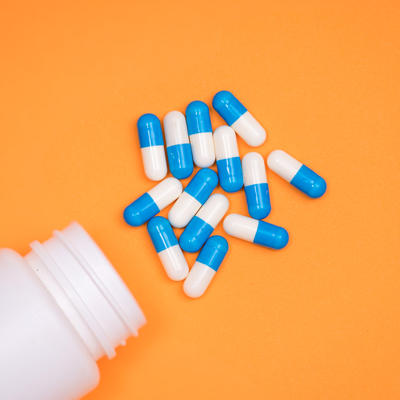
Martin Menosky, M.D., ’95, is passionate about helping those with opiate use disorder. His journey began all the way back in the days of his family medicine residency training, when doctors still called it “chemical dependency.”
He was a new doctor at the time, and remembers the work of a few of his preceptors. They treated patients struggling with addiction with dignity and respect. They saw their issues as a medical problem, not a moral failing. There was no use of language like “junkies” or “drunks.”
Menosky could really see himself working with patients like that one day. But by that point, he had already committed to family medicine practice. He didn’t want to go for advanced training, and focused instead on his work as a primary care physician. Along the way, his interest in addiction medicine kept perking up.
“I always tried to incorporate a little bit of it. I encouraged alcoholics and others,” Menosky said. “When I had partners, they knew I had an interest in it, and so they would try and steer patients toward me for help.”
Menosky’s road to treating those with opiate use disorder began around 10 years ago, when buprenorphine first came out on the market. The disease was just beginning to make its mark on areas in Southern Ohio, and later Lancaster, where Menosky has practiced for decades.
There was a big crackdown on pill mills, pain clinics run by unscrupulous doctors who illegally prescribed medications to anyone they saw. Payment in the faceless offices were typically taken in cash only, and inordinately high dosages of powerful narcotic pain relievers were the normal prescription.
“Opiate addiction is terrible. You can’t just turn it off or walk away from it. Heroin addiction is a problem. It was right around that time,” Menosky said. “I had a patient who was somebody you just couldn’t help. I felt bad, because with family medicine, you can always do something. And I watched him spiral out with heroin addiction and he ultimately overdosed. At that point, I kind of made the commitment.”
He found a training program through Johns Hopkins University so that he could learn more about buprenorphine. The rigorous course lasted several days. Menosky was glad for the thoroughness because he wanted to be able to treat patients correctly and to the best of his ability.
The training initially qualified him to see 30 patients at his practice. After a year, he was able to move up to 100 patients. He started to develop a niche and had enough patients to open a private practice.
Just a few years ago, the American Board of Preventive Medicine opened a practice pathway so that physicians could become board certified in addiction medicine. Menosky signed up, going through 900 continuous hours of additional education and a qualifying exam. The new certification allowed him to expand his practice to 275 patients.
“It always starts out as a choice. But after a certain period of time, that addiction gets hold and then it’s a disease. Once you’re in my office, once you’re sitting across the desk from me, it’s not a choice anymore. It’s a disease and it needs to be treated like such,” Menosky said. “Those are the two big battles I fight right now, getting people to understand it’s a disease and getting people appropriate, legitimate therapy.”
He hasn’t stopped at treating patients. As a physician who practices in a hard-hit area, and has done so for decades, Menosky has become a leader against the epidemic. He trains other health care providers throughout Ohio so that they may also help those struggling with opiate use disorder, and regularly lectures in his community.
Menosky’s work aims to remove a lot of the stigma associated with treating those suffering from opiate use disorder. He hates words like “high” and “junkies.”
“Unfortunately, treating opioid use disorder has a bad connotation. They say, ‘I don’t want junkies in my office.’ Well, these are people, OK,” Menosky said. “Opiate addicts, folks with opiate use disorder, they watch your kids after school. They pick up your garbage. They wait on you at tables. They’re attorneys. They’re doctors. They’re judges. They’re every walk of life.”
He has found that the stereotype of an addict who breaks into your home to steal things and pawn something for a fix is almost never the case. Most of the patients in his practice, 90 percent, hold down jobs. A third have commercial insurance. Others have insurance through their employers. And none of them chose to have the disease they’re battling.
Menosky has traveled around Ohio giving waiver trainings to physicians, nurse practitioners and physician assistants. He’s lectured in Columbus, Dayton, Lancaster, and Lima. He’s gone to town hall meetings, and has also spoken at his church.
“We need to get the world, America, and society to embrace the fact that this is a medical problem,” Menosky said. “It needs to be approached as a medical problem with medical solutions. You can’t incarcerate this problem away. You can’t just lock everybody up.”
A recent waiver training event, held at Wright State University, was the most well attended yet. And Menosky is hopeful for what the future holds.
“I think the problem can be solved. I think government has done one thing correctly. They’ve identified one of the main problems is overprescribing by physicians. That’s reality. They’ve done a really good job of cutting down on pain clinics and pill mills. They have to take the next step,” Menosky said. “Are there bad people in this world? Absolutely. But for the vast majority of people struggling with this disease, this is not something they chose.”
— Daniel Kelly

